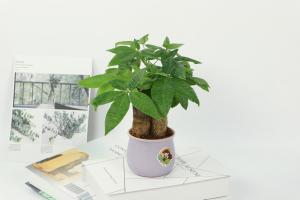How to Tie Up a Newly Planted Tree
Planting a new tree in your yard or garden is an excellent way to enhance your property's beauty and contribute positively to the environment. However, without proper care and attention, your newly planted tree may be susceptible to damage from the wind, rain, and other natural elements. One of the essential aspects of caring for a newly planted tree is knowing how to tie it up correctly. Here's how to tie up a newly planted tree to ensure its growth and health:
Step 1: Assess the Tree's Surroundings
Before you tie up your newly planted tree, take some time to assess its surroundings. Make sure there is no debris, such as rocks or sticks, around the base of the tree. This can damage the tree and hinder its growth. Also, ensure that the tree is not too close to any permanent structures, such as a fence or house, as this can stunt its growth and cause damage over time.
Step 2: Choose the Right Materials
When it comes to tying up your newly planted tree, it's essential to choose the right materials. Many different types of materials can be used, including plastic ties, wire, and rope. However, it's essential to choose materials that are gentle on the tree's bark and root system. A good option is using rubber or cloth ties, as they are gentle and allow for a bit of stretching as the tree grows.
Step 3: Determine Where to Tie Up the Tree
Once you have chosen the right materials, it's time to determine where to tie up the tree. The ideal place to tie up a tree is about two-thirds of the way up the trunk. This area is strong enough to bear the weight of the tree without damaging it. Be sure to select sturdy branches, as flimsy ones can snap under the weight of the trunk and foliage.
Step 4: Position the Ties Correctly
When attaching the ties to the tree, make sure they are positioned correctly. The tie should be tight enough to keep the tree from swaying in the wind but not so tight that it damages the bark or root system. Also, ensure that the tie is not wrapped around the tree tightly; this can cause damage to the bark and inhibit the growth of the tree.
Step 5: Check Your Tree Regularly
Once you have tied up your newly planted tree, it's essential to check it regularly for any signs of damage or stress. If the ties cut into the bark or you notice any cracking or splitting, adjust the ties to prevent further damage. Additionally, if your tree begins to lean, adjust the ties to keep it upright. Regular monitoring of your newly planted tree can help ensure its health and growth.
Conclusion
Tying up a newly planted tree may seem like a challenging task, but with the right materials and techniques, it can be a straightforward process. By following the steps above, you can rest assured that your tree is secure and protected from potential damage. Remember always to check your newly planted tree regularly to ensure its growth and health in the years to come.

 how many times do yo...
how many times do yo... how many planted tre...
how many planted tre... how many pine trees ...
how many pine trees ... how many pecan trees...
how many pecan trees... how many plants comp...
how many plants comp... how many plants can ...
how many plants can ... how many plants and ...
how many plants and ... how many pepper plan...
how many pepper plan...
































